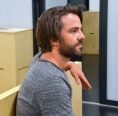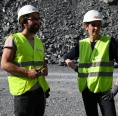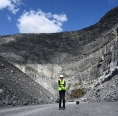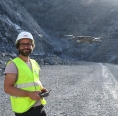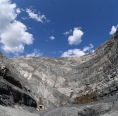-
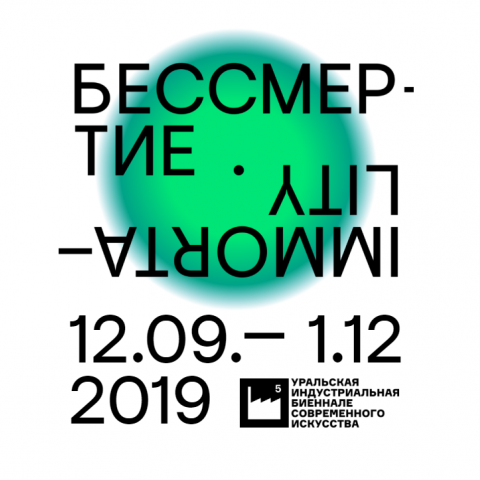
HUMAN PRESENCE IN LANDSCAPE – NEW BIENNALE PROJECT IN SATKA
-
Address:
-
Partners:
The 5th Ural Industrial Biennale of Contemporary Art will take place in the period from 12 September to 1 December in Ekaterinburg and other Ural cities.
Biennale is the biggest regional project that views industriality as heritage and current practice of Russian regions, displays and explains Russian industrial development using contemporary art language.
Biennale hosts the Art Residence Program that establishes cooperation with the existing Ural plants and opens an opportunity for artists to create projects being in direct contact with plant environment and integrate art in Ural industry. The final outcome of artists staying in a residence is the creation of art-specific works in the context of a host city/plant. In addition to that, the results of the Art Residence program will be presented at the final exhibition that is expected to open together with the main project in Ural Optics and Mechanic Plant, the core location of the 5th biennale.
Since 2016, Satka has been the Permanent Residence of Ural Industrial Biennale in Chelyabinsk Region. It is ready to host the new participant of the Art Residence Program for the fourth time now. This year the industrial city center will be visited by Katja Schenker, Swiss artist, performer and sculptor.
Katja Schenker was born in 1968 in St.Gallen, Switzerland. She now lives and works in Zurich. Before gaining master’s degree in Zurich Art University, she studied literature, art history and philosophy in Zurich University and High School for Advanced Social Studies in Paris.
Katja Schenker’s works comprise both performance and culture. She uses paintings, photos and videos to deepen and document the consecutive stages of her artistic process. The choreography of her performances is made with movements that transform materials or objects.
“Katja’s projects always imply physical presence and perception of the environment by the author. In the context of biennale, the idea of working both with materials and the unique local history seems to be promising”, reads the webpage of Swiss-based Pro Helvetia Board which is a permanent partner of Ural biennale and Sobranie Foundation.
Swiss stage manager Severin Kun and coordinator of Art Residence Program Kristina Gorlanova came to Satka together with Katja. Severin Kun makes documentaries about artists and scientists. At the moment he is busy with the film about Katja Schenker.
The guests have already visited many pits in Chelyabinsk Region, including Korkinsky coal mine, Balandinsky marble quarry and Taiginksy graphite mine, but they decided to stay in Satka. “We suggested that Katja should visit Satka, because we have had art residences here several times. We are very glad that Magnesite Group, Sobranie Foundation and Satka support biennale, and our artists are happy with the opportunity to work here too. Katja was impressed greatly with local fireproof materials and, of course, with the size of the pit. That’s why we came here. Our target was to develop a project for the 5th industrial biennale”, said Kristina upon her arrival to Satka.
A poetic link was used by the sculptor as the basis of the project. Inspiration was drawn by her from the Gardens poem by Rainer Maria Rilke. It tells about the life and death of a tree. “It is an existential metaphor, which becomes even more obvious in connection with immortality as the main idea of the 5th industrial biennale. Moreover, it is very close to industrial processes with a wavelike history: a field deposit starts to be developed and turns into a mine pit, but then it returns back to nature, as, for instance, in case with Balandisnky pits which are now a place for open-air recreation. Katja says among other things that this is a big circle”, continues Kristina Gorlanova.
The main idea of Katja’s project is to make an imprint of Karagaisky pit on a long sheet of paper. “Finally, we’ll have a huge sculptural project partially showing the contours of the mine pit with human presence in the landscape. It will be a new landscape model giving the precise picture of what Katja saw and how she felt in the mine pit”, comments the coordinator.
Ural-based industrial biennale is the biggest international art project on the territory of Russian Federation. Founded by Ural branch of the National Center for Contemporary Arts and Russian Culture Ministry, it deals with local specifics and each time finds new facets of industriality. In the period from 2010 to 2017, it involved 319 foreign artists from more than 45 countries worldwide. The project was supported by 48 foreign partners. Biennale is closely connected with Ural industrial culture and views industriality as an era, cultural phenomena and current practice that covers a great many of people and spaces.
The main idea of the 5th biennale is immortality, which gives good reasons to think about things that will stay after the production and artistic processes are over. Will it be a product or any other results?
The Art Residence Program is one of the strategic programs within the scope of Ural Industrial Biennale. It first took place during the 2nd biennale in 2012. Since then, it has seen over 20 artists from 9 countries and more than 30 new art objects.
The program is focused on cooperation between people working in various areas of visual art and the existing factories. This is a fundamental difference of Ural art residences from many other similar places across the globe. Artists are able to dive into local specifics, myths and lifestyle pattern, which is a good way for them to study Ural industrial heritage and production processes of the existing plants.
Starting from 2015, Italian sculptor Jacopo Mandich, French artist Lea Barbazanges and Swiss artist Florian Graf have studied production and industrialization processes through culture.
Photos by Anna Philipova and Vasily Maksimov.
-
26.08 - 26.08
DIARY OF THE THIRD INDUSTRIAL BIENNALE
-
28.11 - 28.11
MY SATKA FESTIVAL WINS THE CONTEST OF CORPORATE VOLUNTEER PROJECTS
-
13.10 - 15.10
COOPERATION WITH VGIBL NAMED AFTER M.I. RUDOMINO


